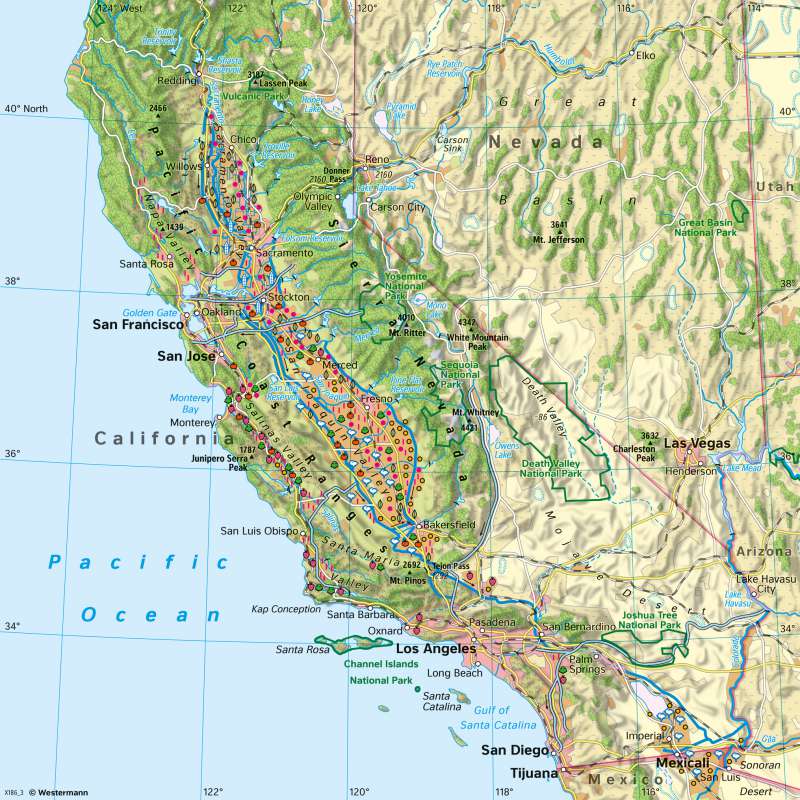California and Nevada - Land cover and agriculture
Land use and water management
978-3-14-100890-6 | Page 186 | Ill. 2

Overview
For many years, California has been the undisputed leader among US states in terms of agricultural value added, and it also has the highest population of all US states due to continued population growth. However, rainfall in the southern parts of the Long Valley is so low (less than 250 mm/year) that agricultural use would not be possible without irrigation. For this reason, it was only in the course of the 20th century that California's Longitudinal Valley became a strong attraction for settlers, farmers and businesses through extensive irrigation projects.
Californian nature
Around 1830, California was still little influenced by humans and the area had a largely natural vegetation cover. The mountains were occupied by hardwoods or forest, and in the southwest and east of the Sierra Nevada range there were semi-deserts and deserts. Today, the original vegetation has often been replaced by irrigated land, permanent crops, and pastures. Intensive agricultural use was only made possible by far-reaching technical measures to ensure water supply. The latter was a major problem, especially due to the summer drought, both for agricultural use and for supplying the cities. Many national parks surround the agricultural land.
Globalised agriculture in California
Today, California is responsible for a great share of many products consumed in the United States as well as exported to other countries. While tomatoes, lettuce, grapes as well as strawberries grow along the Pacific coast, the agriculture in the interior of the state in between the Sierra Nevada and the Coastal Range also includes citrus fruits, almonds, walnuts, pistachios, cotton, and other fruit such as peaches, apricots, and plums. Rice and maize are grown in the northern part in particular. Especially dairy products, almonds and grapes have the highest production value in the United States. While only 25% of the dairy products and 14% of the grapes are exported, 80% of the almonds are transported to other countries worldwide. Other products mostly grown for export include pistachios, walnuts, and rice. In contrast, beef, strawberries, wine, flowers, and lettuce are mostly produced for domestic consumption.
The water used in California mostly consists of surface water (from rainfall and snowfall between October and May). Other sources of water are groundwater and desalination plants. Although a variation of precipitation during the wet season throughout the years is common, the mean amount of precipitation now slowly decreases, leading to less water available for use, especially in agriculture. As the climate graphs on page 187 show, the further south a city in California lies, even less water through monthly precipitation is available. There is also a temporal discrepancy between water supply and demand. The water supply of the rivers reaches its minimum between August and November. Therefore, in late summer only a very small amount of water is available, while the demand for irrigation water is particularly high during this period. A large share of the water is used in private household, industry and commerce, even more water is needed for agriculture. Only the production of fruit and nuts, which demands the biggest amount of water, consumes more water than available from groundwater. Livestock and the production of its feed are also large consumers of water.




